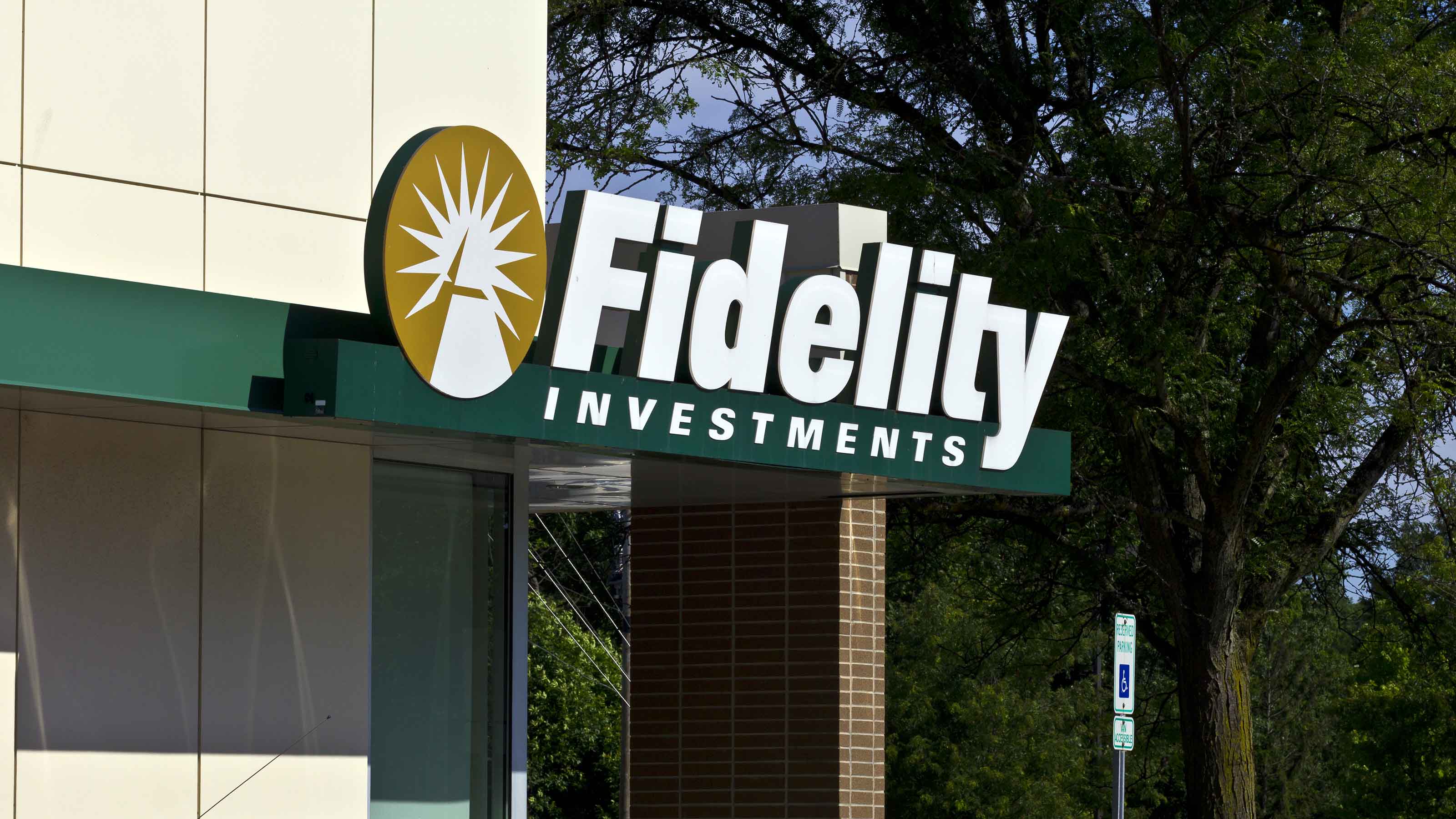Did Fidelity Just Kill Commission-Free Trading?
Commission-free trading is here to stay after Fidelity said it has reached an agreement with dozens of ETF providers.


Karee Venema
Ever since Charles Schwab launched the first real discount brokerage in 1974, the trend has been toward lower and lower trading commissions and fees, culminating in 2019 when virtually every major retail broker switched to zero-commission trading.
Earlier this year, that appeared to be going in reverse after Fidelity Investments announced plans to introduce a $100 "surcharge" on certain ETF trades. It wasn't, strictly speaking, a trading commission, but for all intents and purposes, it might have been considered one.
Investors likely wouldn't have noticed a difference, as the charge was going to being levied on only nine ETF issuers, none of which are in the top 50 by market share. These are smaller, more obscure ETFs that you probably weren't likely to buy anyway. The ETF issuers affected were Adaptive, AXS Investments, Cambiar, Day Hagan, Rayliant, Regents Park, Running Oak, Simplify Asset Management and Sterling Capital.
From just $107.88 $24.99 for Kiplinger Personal Finance
Become a smarter, better informed investor. Subscribe from just $107.88 $24.99, plus get up to 4 Special Issues

Sign up for Kiplinger’s Free Newsletters
Profit and prosper with the best of expert advice on investing, taxes, retirement, personal finance and more - straight to your e-mail.
Profit and prosper with the best of expert advice - straight to your e-mail.
However, Fidelity has since reached agreements with these issuers and dozens of other providers of exchange-traded funds. The firm is also in constructive dialogue with many others. As a result, no service fees will be incurred at this time.
As a Fidelity spokesperson told Kiplinger, "Fidelity remains committed to providing clients choice through an open architecture investment platform. The arrangements we have with asset managers help us uphold the platform and the exceptional value it provides for all products, including customer service, research tools, technology capabilities, and security measures to drive a positive experience for investors."
Fidelity adds that the "decision to harmonize some of our fee policies comes as our level of support and service for ETFs across the industry is growing rapidly. We continue to work closely with asset managers, as we've always done, to engage in constructive dialogue and reach outcomes that reflect a more consistent approach across mutual funds and ETFs. Fidelity provides transparency to investors for commissions, margin rates, and fees at Fidelity.com."
Still there are implications here for investors, and the incident reveals a lot about the "pay to play" incentive structure of the brokerage industry.
Let's dig deeper.
Why would Fidelity consider a surcharge?
Mutual funds have always paid for the privilege of being available on brokerage platforms. Whether by sales loads or 12b-1 fees, mutual funds have traditionally incentivized brokerage firms to carry their offering and individual stock brokers and advisers to sell them.
A sales load is a commission that comes off the top of an investment. For example, if a mutual fund charges a 5% load, you're really only investing 95 cents on the dollar, with the other 5% going into the broker's pocket. Loaded mutual funds have really fallen out of favor. Recent research from the Investment Company Institute found that 92% of mutual fund sales by dollars invested went into no-load funds.
Another industry trick is the 12b-1 fee. This is, in effect, a trailer the broker gets for every year the client continues to hold the fund. In theory, this incentivizes the broker to hold on to the fund instead of churning the account in pursuit of new commissions. But it's still money flowing out of the pocket of the investor and into the pocket of the broker.
ETFs have long been touted as cheaper alternatives to traditional mutual funds, and for the most part this is true. There are no loads for ETFs, as they trade like stocks and thus enjoy free or nearly free trading commissions at most brokerage houses. And because ETFs are often index funds and have very limited trading expenses, they can' charge very low internal expenses. The expense ratio on the popular iShares Core S&P 500 ETF (IVV) is just 0.03%, for example, meaning that for every $1,000 you invest, you lose just 30 cents in fees per year.
And here's where pay to play comes into effect.
Despite the fact that ETFs trade on stock exchanges just like stocks, some brokers have "maintenance arrangements in place" in which the ETF managers share a portion of their management fees with the broker for the privilege of having the ETFs available at the broker. In the case of Fidelity, the company is asking for 15% of the fees collected by the managers. For the ETF managers that didn't take the deal, any service fee would be limited to 5% of a buy, up to $100.
What does this mean for investors?
It seems that no matter how many fiduciary rules the regulators put in place, there are always going to be incentives for brokers and managers to act against the interests of their investors. Management fees on mutual funds and ETFs have really come down over the past few decades to the point that a large ETF like IVV can charge just 0.03% and still turn a profit for the manager.
But if fees are the start of a new trend in the industry, then it's likely that the overall cost to clients could rise. If the ETF managers have to pay the broker a cut, they will have less revenue to cover their costs and pay their staff. As a practical matter, that likely means they'll need to charge higher fees.
Another unintended consequence is that fees could strengthen the large, existing players in the industry and penalize smaller upstarts. This would potentially reduce the available options to the investor and reduce competition.
In the bigger picture, the takeaway may be that the great, multi-decade trend toward lower and lower fees to investors could hit the end of the line at some point in the near future. This doesn't mean we'll be going back to the pre-1974 days of ridiculously expensive fixed commissions, of course. But at the margin, it does mean a little less money in investors' pockets.
Editor's Note: This article initially stated that based on a hypothetical $100 service fee, "you could buy a single share of an ETF for $50 and then pay a 200% commission on that purchase in the form of the $100 surcharge" and that ETFs of issuers who did not reach an agreement with Fidelity would be "subject to a $100 surcharge." This is not accurate. Any service fee would be limited to 5% of a buy, up to $100. This article has also been updated to reflect that Fidelity has reached agreements with these issuers and dozens of other ETF providers.
Related Content
Profit and prosper with the best of Kiplinger's advice on investing, taxes, retirement, personal finance and much more. Delivered daily. Enter your email in the box and click Sign Me Up.

Charles Lewis Sizemore, CFA is the Chief Investment Officer of Sizemore Capital Management LLC, a registered investment advisor based in Dallas, Texas. Charles is a frequent guest on CNBC, Bloomberg TV and Fox Business News, has been quoted in Barron's Magazine, The Wall Street Journal, and The Washington Post and is a frequent contributor to Yahoo Finance, Forbes Moneybuilder, GuruFocus, MarketWatch and InvestorPlace.com.
- Karee VenemaSenior Investing Editor, Kiplinger.com
-
 What to expect from the global economy in 2026
What to expect from the global economy in 2026The Kiplinger Letter Economic growth across the globe will be highly uneven, with some major economies accelerating while others hit the brakes.
-
 What You Need to Do With Your 401(k) Before 2025 Is Over
What You Need to Do With Your 401(k) Before 2025 Is OverBefore 2025 ends, check your 401(k) contributions, investments, and catch-up eligibility to lock in this year’s tax savings and employer match.
-
 3 Year-End Tax Moves You Can't Afford to Miss
3 Year-End Tax Moves You Can't Afford to MissDon't miss out on this prime time to maximize contributions to your retirement accounts, do Roth conversions and capture investment gains.
-
 I'm a Tax Attorney: These Are the Year-End Tax Moves You Can't Afford to Miss
I'm a Tax Attorney: These Are the Year-End Tax Moves You Can't Afford to MissDon't miss out on this prime time to maximize contributions to your retirement accounts, do Roth conversions and capture investment gains.
-
 I'm an Investment Adviser: This Is the Tax Diversification Strategy You Need for Your Retirement Income
I'm an Investment Adviser: This Is the Tax Diversification Strategy You Need for Your Retirement IncomeSpreading savings across three "tax buckets" — pretax, Roth and taxable — can help give retirees the flexibility to control when and how much taxes they pay.
-
 Dow Rises 497 Points on December Rate Cut: Stock Market Today
Dow Rises 497 Points on December Rate Cut: Stock Market TodayThe basic questions for market participants and policymakers remain the same after a widely expected Fed rate cut.
-
 Could an Annuity Be Your Retirement Safety Net? 4 Key Considerations
Could an Annuity Be Your Retirement Safety Net? 4 Key ConsiderationsMore people are considering annuities to achieve tax-deferred growth and guaranteed income, but deciding if they are right for you depends on these key factors.
-
 I'm a Financial Pro: Older Taxpayers Really Won't Want to Miss Out on This Hefty (Temporary) Tax Break
I'm a Financial Pro: Older Taxpayers Really Won't Want to Miss Out on This Hefty (Temporary) Tax BreakIf you're age 65 or older, you can claim a "bonus" tax deduction of up to $6,000 through 2028 that can be stacked on top of other deductions.
-
 JPMorgan's Drop Drags on the Dow: Stock Market Today
JPMorgan's Drop Drags on the Dow: Stock Market TodaySmall-cap stocks outperformed Tuesday on expectations that the Fed will cut interest rates on Wednesday.
-
 Meet the World's Unluckiest — Not to Mention Entitled — Porch Pirate
Meet the World's Unluckiest — Not to Mention Entitled — Porch PirateThis teen swiped a booby-trapped package that showered him with glitter, and then he hurt his wrist while fleeing. This is why no lawyer will represent him.
-
 Smart Business: How Community Engagement Can Help Fuel Growth
Smart Business: How Community Engagement Can Help Fuel GrowthAs a financial professional, you can strengthen your brand while making a difference in your community. See how these pros turned community spirit into growth.